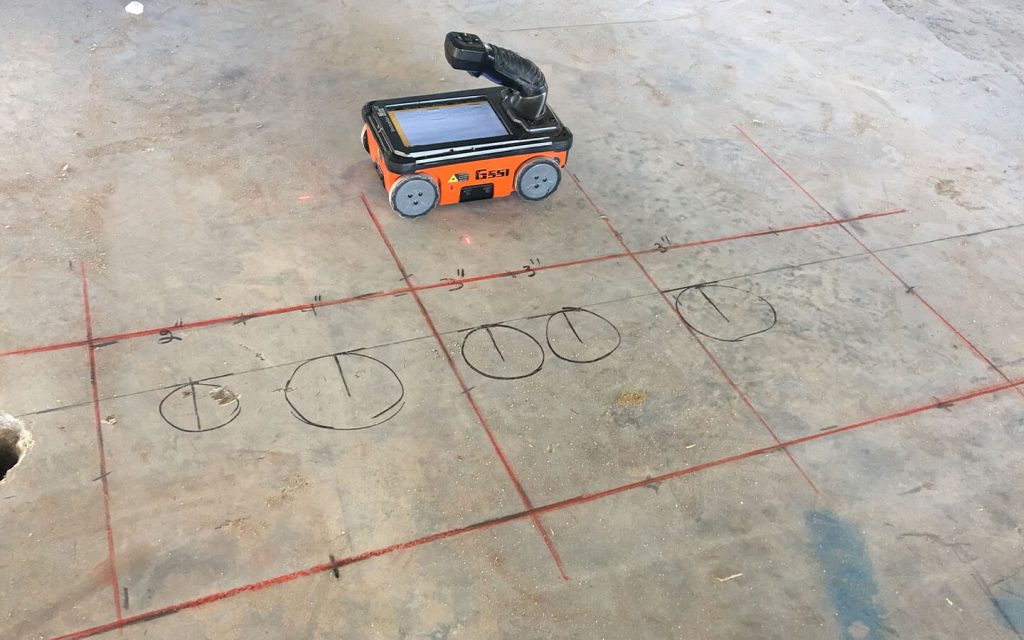Advanced Concrete Scanning Techniques: Making Sure Architectural Integrity
Advanced Concrete Scanning Techniques: Making Sure Architectural Integrity
Blog Article
Reveal the Transformative Power of Concrete Scanning in Maximizing Efficiency and Safety And Security
Concrete scanning has actually arised as a vital tool in the building market, using unequaled benefits in improving job effectiveness and making sure safety standards. The transformative power of concrete scanning lies in its ability to offer real-time data and in-depth insights, reinventing exactly how projects are planned and performed.
Relevance of Concrete Scanning
Making sure the architectural integrity and safety of building and construction jobs begins with the vital step of performing thorough concrete scanning. Concrete scanning is a non-destructive approach made use of to spot and map subsurface elements within concrete frameworks.
The significance of concrete scanning can not be overemphasized, as it plays a crucial duty in avoiding crashes, decreasing project hold-ups, and making certain the long-term resilience of the building. By recognizing prospective hazards prior to the building stage starts, home builders can apply appropriate precaution and make educated decisions relating to the layout and implementation of the project. Furthermore, concrete scanning aids in optimizing job timelines and spending plan by staying clear of unexpected expenses and delays that might arise because of unanticipated blockages within the concrete. Inevitably, purchasing complete concrete scanning is an aggressive approach that improves both effectiveness and safety in building tasks.
Exactly How Concrete Scanning Works
Concrete scanning operates as a vital tool in construction projects by employing innovative technologies to discover and map subsurface components without causing architectural damages. Ground Permeating Radar (GPR) and Electromagnetic Induction (EMI) are two main approaches utilized in concrete scanning. GPR works by producing high-frequency radar pulses into the surface area, which jump back when they come across subsurface items or voids. The moment taken for the signal to return shows the deepness and location of the items. EMI, on the other hand, makes use of electro-magnetic fields to identify differences in material compositions, such as recognizing rebar or conduits within concrete structures.
During the scanning procedure, the data accumulated is examined in real-time, allowing prompt identification of potential threats or challenges beneath the surface. This details aids in decision-making, making sure that building activities continue securely and efficiently. Furthermore, 3D imaging software program can be utilized to produce thorough maps of the subsurface elements, even more boosting project planning and execution. By utilizing these innovative technologies, concrete scanning substantially lowers the risk of costly damages and injuries on building websites.
Benefits of Concrete Scanning
One of the primary advantages of concrete scanning is the ability to detect and situate embedded items such as rebar, post-tension cables, and avenues precisely. Concrete scanning aids in preparation and designing extra successfully, as it offers precise information concerning the place and depth of structural components.

Instance Researches: Concrete Scanning Success

In an additional case, a building company utilized 3D concrete scanning to examine the problem old concrete frameworks in a historical building. The in-depth scans provided useful insights into the level of wear and tear and assisted focus on maintenance efforts successfully. By proactively addressing areas of worry recognized through scanning, the business had the ability to extend the lifespan of the structure and make certain occupant safety and security.
These home study emphasize the transformative power of concrete scanning in boosting performance, precision, and safety and security in construction projects.
Implementing Concrete Scanning in Projects
Executing sophisticated scanning innovations during construction projects has become increasingly important for enhancing precision and safety. By incorporating concrete scanning right into task preparation and implementation, building and construction groups can determine possible hazards, such as rebar or post-tension cable televisions, concealed within concrete structures. This positive method lessens the threat of crashes, delays, and costly rework, ultimately causing extra efficient project timelines and budget plans.
To execute concrete scanning efficiently, job managers ought to collaborate very closely with knowledgeable scanning experts to identify the most ideal scanning methods for the specific task demands. Engaging scanning specialists from the onset of a task makes it possible for the group to create comprehensive scanning strategies that deal with essential locations of worry and make sure thorough information collection.
In addition, integrating concrete scanning into routine job process can improve decision-making processes, as real-time scan information provides instant insights into the problem of concrete frameworks - Concrete Scanning. This data-driven strategy facilitates educated analytic and makes it possible for groups to make changes without delay, promoting a society of efficiency and security throughout the job lifecycle

Final Thought
In verdict, concrete scanning plays an essential function in boosting efficiency and safety in building tasks. By making use of advanced innovation to map and detect out underlying structures within concrete, this procedure assists to stop costly mistakes, guarantee structural stability, and lessen threats on website. With the ability to uncover hidden aspects and supply exact information, concrete scanning proves to be a valuable tool for maximizing project results and maximizing general success.
Concrete scanning is a non-destructive approach made use of to detect and map subsurface aspects within concrete structures. In addition, concrete scanning helps in maximizing task timelines and budget by preventing unforeseen prices and hold-ups that may emerge due to unanticipated obstructions within the concrete. One remarkable situation research involves a massive improvement job where concrete scanning played a vital function in making sure job success.In another instance, a building and construction business utilized 3D concrete scanning to assess the problem of aging concrete structures in a historical structure. By integrating concrete scanning right into job planning and implementation, building teams can recognize possible risks, such as rebar pop over to this site or post-tension cables, concealed within concrete structures.
Report this page